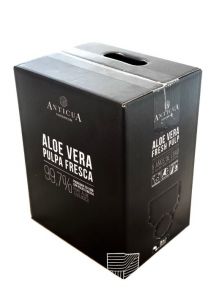We use cookies to make your experience better. To comply with the new e-Privacy directive, we need to ask for your consent to set the cookies. Learn more.
There are several ways to extract aloe gel. Depending on the process used for this, the gel can be of better or worse quality in terms of the conservation of the properties of the plant, or in other words, the process of extraction of the aloe that we use determines the final quality of the product.
There are processes by which the properties of this plant are used to the maximum, while in other processes, more economical for the companies that dedicate themselves to aloe, most of the plant's properties are lost.
It is therefore important to know the process to which the aloe vera has been subjected, since if for example it is aloe vera powder, it has been subjected to heat, losing properties and nutrients in the process.
We are going to break down all the usual processes to extract the aloe vera gel that will then be used in cosmetics and food (aloe juice):
Aloe vera pressed at cool room temperature with squeezed pulp
In a cold pressing machine, the outer part of the leaf (green colour) is separated from the internal part (pulp). In this machine the pulp is crushed, extracting an unfiltered raw juice that is pumped to a tank by means of a cooling coil. It is an artisanal process that allows the maximum conservation of nutrients and minerals of the pulp taking advantage of 38%. With this process the average of aloin is between 6-9 milligrams per litre - the IASC recommends that it be less than 10 milligrams per litre.
Advantages of this process: The percentage of acemannan (the essence of aloe) is preserved intact, that is, with all the minerals and nutrients of the plant.
Our aloe vera juice is made with fresh pulp, using a traditional process.
Pasteurized aloe vera
The method of pasteurization used is the HTST (High Temperature Short Time), an innovative ultra-pasteurising technique at 120 degrees that allows a greater conservation of the product without damaging its medicinal properties. With the whole leaf pasteurization process, the use and industrial performance is higher, reaching 78%. The whole leaf is crushed, separating it in a process using active carbon that allows a greater use of the leaf. When using the ´skin´ it has greater properties although its flavour is stronger. In this process, aloin is 0.01%, which causes the resulting gel, with very little aloin, to be transparent in colour, which, at the time of selling, is less successful but may even be of higher quality than that of green colour.
Advantages: 0.01% aloin. The percentage of acemannan (the essence of aloe) is preserved intact, that is, with all the properties and nutrients.
Aloe vera concentrate or aloe vera extract
Concentrated aloe vera, or extract, is a lyophilized or dehydrated process in which 100 liters of aloe vera are converted into one kilo of aloe vera powder. This is subjected to a current of heat, with temperatures of more than 200 degrees, producing a rapid vaporization of all the water contained and thus obtaining the dust. This heat process eliminates many of the benefits of aloe vera.
Many companies choose this method because their aloe plantations are usually far from the production centers and it is cheaper to send in this format. Once it arrives at the factory these companies reconstitute aloe vera powder by adding water.
Disadvantages: In these extracts the problem is that the aloe contained may be very scarce and we can find a high amount of maltrodextrin, a cake that does not contribute anything in terms of properties other than getting a better mix of the product. For 1% of aloe, 25% maltrodextrin is added. The problem is that the maltrodextrin contains starch, in addition it can include many chemicals, and really does not contribute anything other than cheaper production for the company.
These days aloe vera is news, with headlines such as aloe puff and this is because they have investigated economic aloe vera brands whose products have hardly any aloe, and instead has high amounts of maltrodextrin.
Within concentrated aloe vera there are two ways to produce it depending on the type of drying. In both cases this heat process eliminates many of the benefits of aloe vera.
CONCLUSION
The best processes, those that offer us more guarantees that all, or practically all, the properties of the plant are preserved, are fresh cold-pressed aloe vera and pasteurized. The other processes, more industrialized and therefore more economical for the companies, allow a greater benefit to the companies that commercialize them but we cannot assure that they keep the properties of the aloe vera intact.
In Pure Aloe we only use the first two processes. Aloe vera cold pressed for juice. And pasteurized aloe vera to make cosmetics. We make sure that we keep as many aloe properties as possible and without adding water, since the aloe itself already contains it. In Pure aloe we also have the advantage that we have our own plantation and both processes are carried out in our factory. And so that there is no cheating you can virtually visit our company, where you will see the plantation and the factory, located in the same environment, with all the necessary machinery for these processes that we have mentioned.



